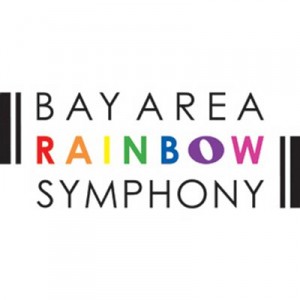 “I’d like to play in that,” was my immediate reaction on hearing about the program planned for June 6, 2015, by the Bay Area Rainbow Symphony in San Francisco. I’d been communicating with BARS about how to obtain the score and parts for Ethel Smyth’s monumental Serenade of 1889. Part of WPA’s work is to help make orchestral works by women more readily available. Smyth’s case, unfortunately, is typical: even for a composer whose name is well-known, it can be difficult or even impossible to obtain the performance materials. When I learned that BARS (a community orchestra) would perform the Smyth, together with Vítězslava Kaprálová’s Partita for Piano and Strings and Clara Schumann’s Piano Concerto – all of them favorite works of mine! — I determined to grab my cello and head to the west coast.
“I’d like to play in that,” was my immediate reaction on hearing about the program planned for June 6, 2015, by the Bay Area Rainbow Symphony in San Francisco. I’d been communicating with BARS about how to obtain the score and parts for Ethel Smyth’s monumental Serenade of 1889. Part of WPA’s work is to help make orchestral works by women more readily available. Smyth’s case, unfortunately, is typical: even for a composer whose name is well-known, it can be difficult or even impossible to obtain the performance materials. When I learned that BARS (a community orchestra) would perform the Smyth, together with Vítězslava Kaprálová’s Partita for Piano and Strings and Clara Schumann’s Piano Concerto – all of them favorite works of mine! — I determined to grab my cello and head to the west coast.
Ethel Smyth’s (1858-1944) Serenade in D major was the vast orchestral work that the composer used to launch herself as a fully-fledged composer. At age 31 she had written many chamber works, songs and piano pieces, but this was her bold leap into the world of the orchestra. And she would never look back – she would go on from there to write other orchestral works (such as her Concerto for violin and horn in A), her Mass, and six (SIX!) operas.
The Serenade is in a luscious post-romantic style, with harmonies that are sometimes sensuous, other times edgy and tense. The writing is often bold and heroic, but there are also sensitive melodies, and tunes that you just might leave humming.
The Czech composer Vítězslava Kaprálová was born 100 years ago, into a musical family, and she started composing at a precociously young age. She was 23 in 1938 when she started the Partita for Piano and Strings, Op. 20, and it was her third major work for orchestra. At the time she was studying with Bohuslav Martinů in Paris, and according to him the Partita was an exercise in neo-classicism: in this case, formal procedures such as ritornelli — repeating passages performed by the full ensemble, between which the soloist (with light accompaniment) spins out new ideas — and the vigorous rhythmic propulsion so common toAllegro tempos of the baroque. The Partita is her only surviving work to explore this style. Kaprálová left Paris for southern France, and she died on June 16, 1940, on the day that the German army marched into Paris. The cause is usually described as a rare but acute form of tuberculosis, but one doctor stated the cause was unidentified.
Clara Schumann (née Wieck, 1819-1896) started writing her Piano Concerto at age 13. Robert Schumann (who would of course become her husband) orchestrated the first completed movement, which later became the third movement of the full Concerto, op. 7. Clara then composed and orchestrated the first movement herself, and chose to score the lovely second movement, Romanze, for piano and solo cello alone. This remarkable idea may have influenced Johannes Brahms when he wrote his Piano Concerto No. 2 in B-flat major, which features a cello solo in the Andante movement. The Concerto was a brilliant and powerful vehicle for Clara as a young pianist. Following her marriage, Clara did continue to compose, but never wrote again for orchestra. And following Robert’s death, she devoted herself to promoting his music, through her concertizing and teaching.
Living in an era when women were not seen to be capable of creative ability, Clara composed, first at the instigation of her domineering father, and then as part of her creative partnership with Robert. In this partnership, however, she could never truly be an equal, since the status of wife defined her as secondary to her husband. But much of her music, including this breathtaking concerto, reveals that her talent was a significant one.
The opportunity to perform in a concert featuring these three distinct and powerful examples of works by women is, indeed, wonderful. The heyday of my experience as an orchestral musician is now long ago, but it was devoted to the traditional “masterworks” – led by the traditional male Maestro. The whole vocabulary of the rehearsal is much altered by having the composer be a female. It’s “what she wrote,” “what she wanted,” “what she was after,” “her idea here is …” — hearing the female pronouns so prominently, instead of the masculine ones – what a huge change that is. And (I’m sure, not coincidentally) we have the added bonus of also having a woman conductor, Dawn Harms, so to have a woman in that authoritative position of the Maestro is another extraordinary factor. This results in a different vocabulary in the comments by the musicians: it’s “what she (the conductor) wants,” “what she told us,” “her approach here.” And having these female pronouns so prominent in every aspect of the musical discussion causes nothing less than a very subtle loosening of the confines of patriarchy – bonds that you might not even have even been aware of, until you feel yourself breathing more freely as they ease.
